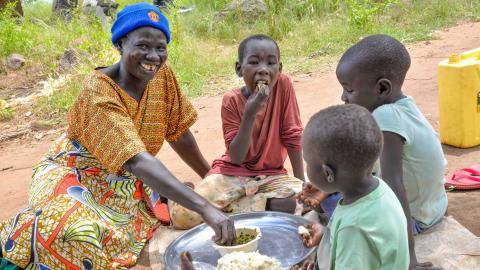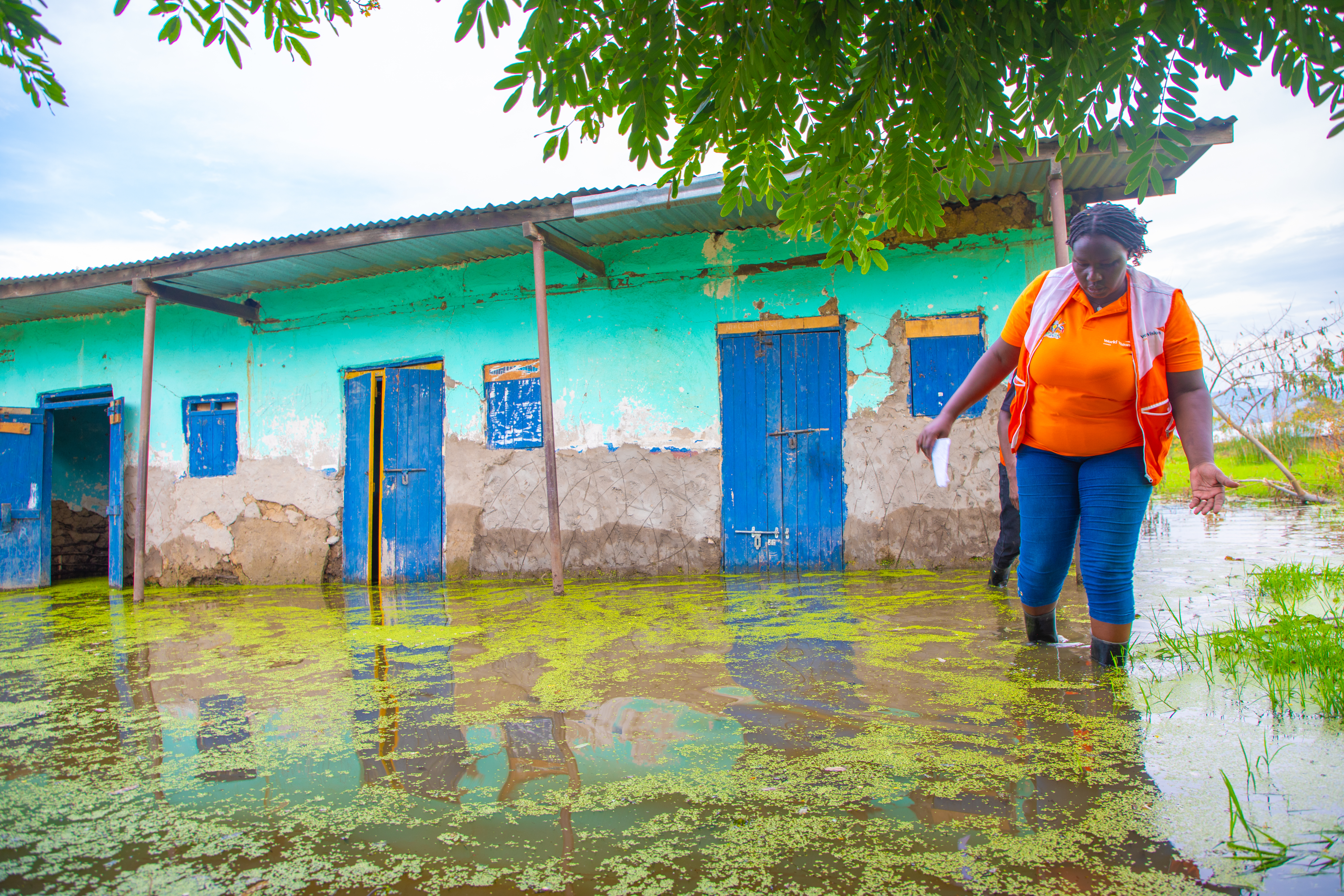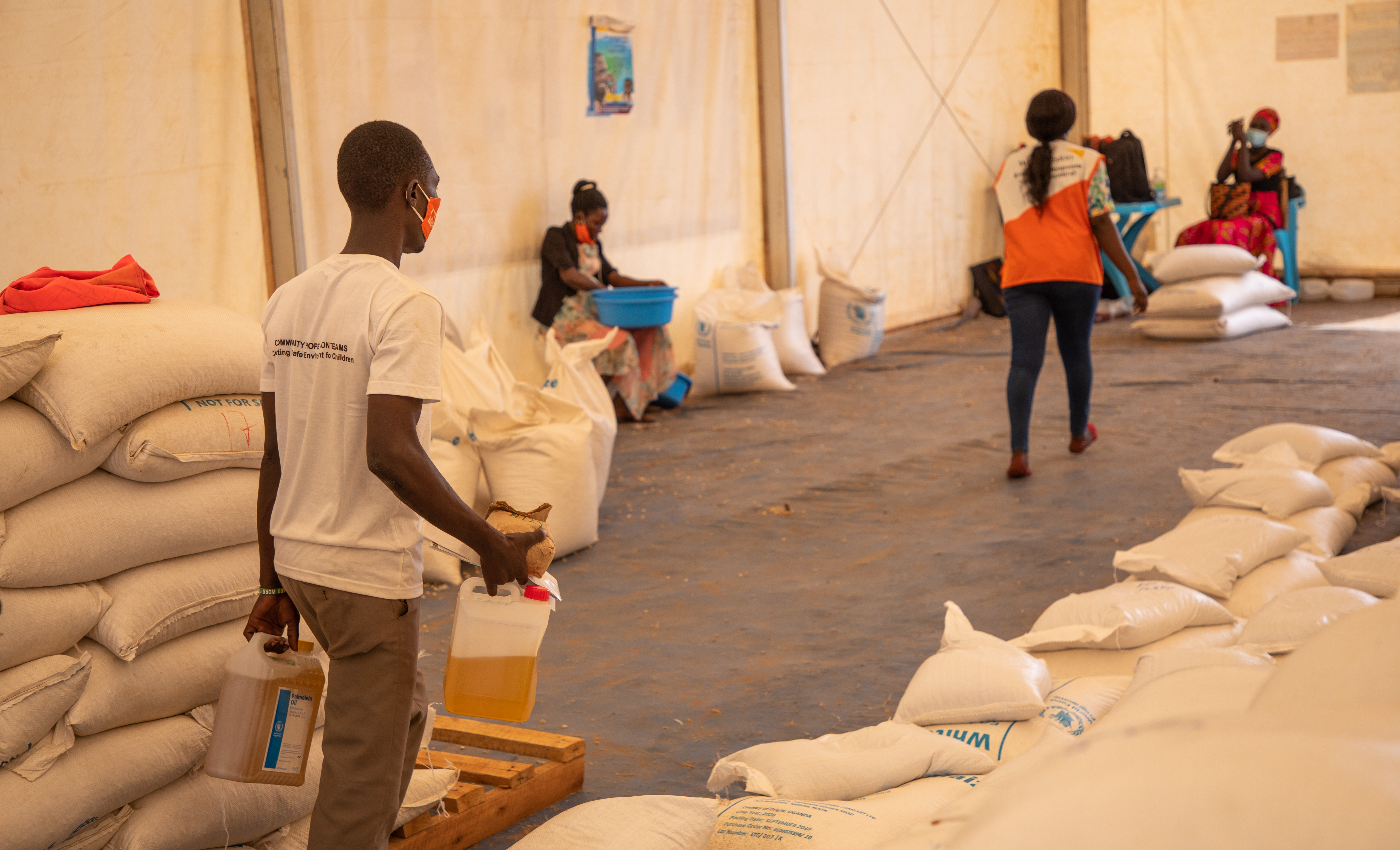
Uganda Refugee Response
As the world continues to face an array of natural and man-made disasters, the needs of vulnerable populations are evolving and so are we.
With operations in 82 out of 135 districts across Uganda and a global commitment to sustained child well-being, World Vision Uganda (WVU) is strengthening its holistic, child-focused disaster management approach. Building on our former Disaster Management (DM) 2020 strategy, we now operate under the Sustained Humanitarian Response (SHR) framework, an integrated model that blends early action, recovery, resilience, and long-term development.
This model reflects an internal and external shift from traditional emergency aid to agile, evidence-based, and community-empowering interventions, with a special focus on the protection and flourishing of children, especially in conflict-affected areas.

Our Strategic Model: From Disaster Management 2020 to Sustained Humanitarian Response
Under DM2020, World Vision Uganda moved beyond siloed emergency and development models, embedding disaster risk reduction, preparedness, and resilience into all phases of programming. In the Sustained Humanitarian Response era, these principles are more deeply rooted in how we serve both refugee and host communities, especially under growing shocks from conflict, climate change, displacement, and epidemics.
We continue to leverage our global development footprint to integrate early warning systems, local governance, disaster mitigation, and community development. Our strategy is guided by key frameworks, including:
Uganda’s Refugee Response Plan (RRP)
The Comprehensive Refugee Response Framework (CRRF)
ReHoPE and the Uganda Settlement Transformation Agenda
World Vision’s Our Promise and the Country Strategy FY21–FY25
Humanitarian Context in 2025
Uganda remains Africa’s largest refugee-hosting nation with over 1.52 million refugees, mainly from South Sudan (58%) and the Democratic Republic of Congo (32%). In the first four months of 2025 alone, 63,123 new arrivals from the DRC were registered—a 198% increase compared to the same period in 2024 (UNHCR, 2025).
Most arrive through Kisoro, Kanungu, and Kikuube districts, fleeing brutal violence, hunger, and systemic collapse. Transit centres like Matanda and Nyakabande operate at over 360%–530% capacity, lacking adequate WASH, health services, or shelter. Nearly 19% of new arrivals are children under five, and GAM rates are at 7%, with multiple malnutrition-related deaths recorded.
Our Impact: FY21–FY25 Achievements
Since the launch of our current strategy (FY21–FY25), WVU has reached:
885,357 total individuals, including
458,913 children (0–17 years)
426,444 adults (18+ years)

Our Approach: Children at the Centre
When disasters strike, children are the most affected by hunger, violence, disrupted education, and psychological trauma. World Vision Uganda commits to a continuum of care:
Before Disaster: Build resilience, educate children, support families
During Crisis: Deploy life-saving aid, psychosocial first aid, and protection
After Disaster: Support long-term recovery, education, and community rebuilding
Protective factors we foster include:
Personal strength (faith, self-efficacy)
Family stability (caregiver mental health, social support)
Community support (collective responsibility, inclusive safety nets)
Sectoral highlights include:
Resilience and Livelihoods
394,286 people reached with support in agronomy, value chains, climate-smart inputs
Producer groups and VSLA networks scaled to enhance economic stability and food security
Child Protection and Education
409,993 individuals reached with services including case management, psychosocial support, and inclusive education
45 operational Child-Friendly Spaces supporting safe play, healing, and learning
15,000+ unaccompanied/separated children under structured case management
WASH
81,078 individuals served through improved water supply, sanitation facilities, and hygiene education
Infrastructure adapted for flood-prone and water-scarce areas within settlements
*Statistics as of 2025
- https://www.wvi.org/stories/uganda/how-nexus-programming-transforming-uganda-refugee-response
- https://www.wvi.org/stories/uganda/nexus-based-programming-takes-shape-uganda-refugee-response
- https://www.wvi.org/stories/uganda/turning-adversity-prosperity-stellas-triumph-economic-empowerment
- https://www.wvi.org/stories/uganda/voices-unlocked-how-children-uganda-are-turning-smartphones-storytelling-tools